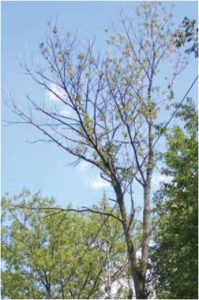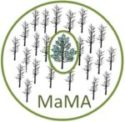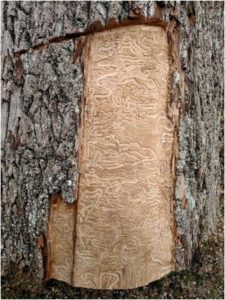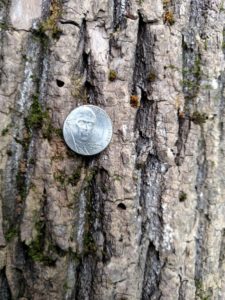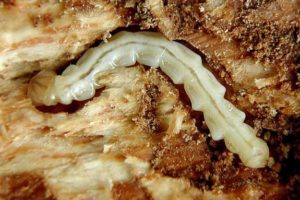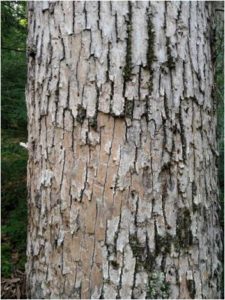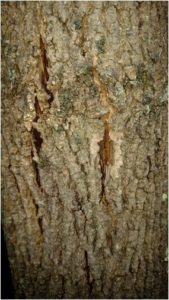1. Definite signs of EAB
Serpentine larval galleries directly under the bark
No other insect makes such looping galleries right under the bark in ash. The native Eastern Ash Bark Beetle makes more linear, narrow tracks right under the bark, while both the native Redheaded Ash Borer and the Banded Ash Borer make galleries that penetrate into the sapwood and are less looping than those of EAB.
Multiple D-shaped exit holes
Other borers occasionally make a D-shaped hole (accompanied by others that are circular or ovate); however, if you see multiple D-shaped holes, this is definitive. In the photo, note that these holes are quite small, which can make finding them difficult. These holes are made by the adult EAB as they are exiting the tree.
Distinctive EAB larvae directly beneath the bark
No other insect larvae in ash trees have white, bell-shaped body segments like EAB. These are found in the serpentine galleries they excavate just beneath the bark.
2. Probable sign of EAB
Extensive bark flaking by woodpeckers, accompanied by larval extraction holes.
This damage is quite noticeable because when woodpeckers remove outer bark, the lighter-colored inner bark is revealed, resulting in what is known as “blonding” (although after a while the exposed inner bark turns gray). Although outer bark can fall off for other reasons, when it has been flaked off by woodpeckers foraging on larvae, the inner bark will also show numerous, irregular holes where woodpeckers have extracted prey. Woodpeckers also eat prey other than EAB, but they are in found in much lower abundance than this pest; therefore, when truly extensive flaking is found, involving much of a tree and often large areas of nearby trees, it is almost certainly due to EAB. Nevertheless, to confirm that EAB has caused it, you should look closely for D-shaped holes or serpentine galleries (and if the tree is already dead, you can remove bark to look for the galleries).
3. Possible signs of EAB
The following three signs can result from EAB infestation, but they can also be due to disease or other stressors. If you see any of them, you should look for definite evidence.
Epicormic shoots (shoots arising directly from the trunk or base of the tree instead of from twigs on branches)
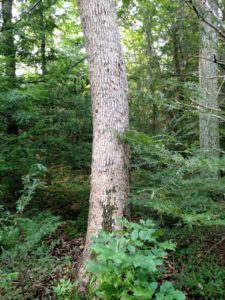
Canopy die-back (dead branches or twigs) or thinning (fewer leaves) from the top of the tree down. In healthy ash trees, in contrast, lower branches die off, while the canopy remains full.
